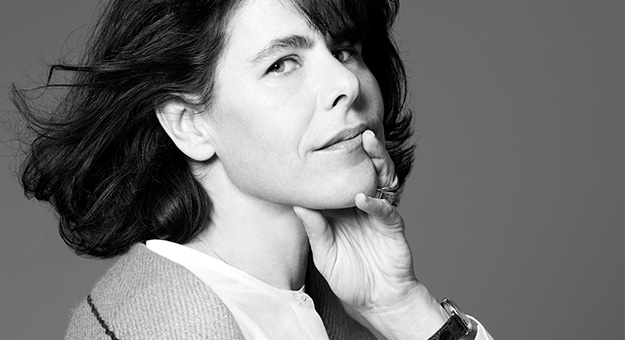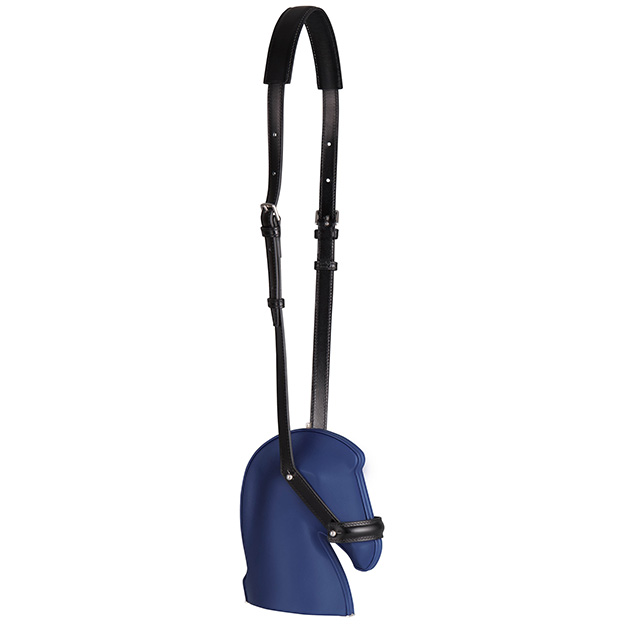24 Minutes with Bali Barret, artistic director for Hermès’ women’s universe
Creative vision

Cai Mei: You’ve been artistic director for the women’s universe at Hermès since 2009. Can you please tell us what your role entails in a nutshell?
Bali Barret: My role is to work with all the designers in elaborating, creating, and following up on the process of creation of each collection. So I have new work to do every day. I work on each collection with each designer very closely. It’s a 360 vision; I don’t equalise everything or tell them to do this or that. It’s more about enhancing each collection, and that’s interesting because the Hermès woman is six or seven visions, and that’s what makes it special. Each collection is totally independent—it has its own vision, its own thinking, and a different view of the Hermès woman, and that’s what makes it interesting and very rich. It’s very organic, sensible work.
It also sounds stressful.
What is stressful is the schedule—there’s so much to be done in such a short time but the nature of the work itself is not stressful. It’s super exciting.
What was the inspiration behind the Hermès SS18 women’s bag collection?
The few bags we’re showing at this presentation is just a small selection from the wider collection, and these bags really show the spirit of what Hermès leather goods, or Hermès leather is—its style and philosophy. Hermès leather is not only about making bags; it’s more than that. The very first activity at Hermès was with leather so that was the founding craft. It’s not just about fashion, and trends. It’s really about the know-how, tradition, craftsmanship, and that’s the starting point. In all our work for the brand, that’s where we start. What was your favourite piece in the collection?
I love the (Galop d’Hermes) horsehead minaudière!
Yes, I love it too. It’s beautiful and fun. It’s a crazy object. This head comes from an object first created by Hermès for the home collection. It was a decorative object, somewhat heavy so it could be used as a paperweight. We saw it and thought, wouldn’t this make such a nice purse or clutch? How can we do it? Very naturally, we said what was missing from the horse is the harness. So to make a bag strap, the harness would be perfect. The challenge transforming this sculpture into a bag. When you open it, the inside has to be beautiful, then you have to find a way to close it. Then you have create the harness, mould the leather onto the head, but we did it. At the start of these kind of projects, we never know whether we can achieve the end result but we succeeded.

Do you ever get tired of working with leather?
The sources of inspiration are so wide. If you think about what Hermès inspirations are, they are a lot of things but they are precise things. The equestrian background, the foundation of Hermès, itself is huge. We have tons of books on examples of harnesses, saddles, all the metallic pieces…it’s a universe of inspiration. Every time I go through the books, I find a new idea, or a new way to manufacture, or a new way to stitch. It’s really very rich. Emile Hermès, the great grandfather of Axel and Pierre-Alexis Dumas, was an object collector. He loved to collect objects and he was very interested in how things were made, how the object opened or closed. So we have a vast collection of objects.
He started with the locker bag, featuring a door locker, which he put on a bag. It was quite advance at that time, a very modern way of working. They started a tradition of creating metallic systems in the ’20s and ’30s, and created bags inspired by boxes. The Hermès 2002 bag, was created in the ’70s. This season, we have included the reedition, an evolution of the original. We designed it give it a bit more volume. The language at Hermès is endless.
Hermès produces beautiful colours each season. What is the process behind selecting these new colours?
We create inspirational colour cards. Like other designers, we create a moodboard—what we feel for, what we want, and then we create the colours. There is the technical aspect that is quite important as well, as we want colours that endure the test of time. So we make colour cards, which then get tested and then they come back to us and may say ‘ok, this blue will not resist more than 20 years’. We really want to create quality so we do away with some. Two things are important here: intuition and technique.
Our top 10 picks from Hermès Spring Summer 2018:
{insert gallery tpl=”slide-freesize.tpl” id=”[Стандартная] Hermes SS18 Accessories” rid=”5715″ order=”a_tstamp”}
Is there such a thing as good design or bad design?
I don’t think there’s good or bad design; there’s right or wrong design. When you work for a house, you have to understand where you are and what it’s all about. A very good design for one house, might be completely wrong for another one. It’s also about what your vision is. Design itself as a notion is not enough. You have to think about where you are and where you want to go. In an old house, you have to think about how you are perceived, what was made before, what is the tradition of the house, what is the strength of the house, what you want to change, why you want to change it, is it a good reason? All design is linked to this way of thinking. Good design is the right design for the right house, with the skills needed. Design is about ideas but also how do you want to make it. The way you make things is very important.
What is your vision for the world of leather at Hermès?
I think the most interesting thing is the pattern, in terms of leather. Craftsmanship, which is unique, but slowly disappearing all over the world, which is the strongest thing that the company has. Everything starts from there. My great interest is to, of course, cherish and continue working this way. I have no desire to change this. I think it’s huge to have people working with their hands, with deep understanding of a technique and that’s the best thing you can ever expect when you love design and objects.
It’s frustrating sometimes when people don’t appreciate the amount of hand work and precision goes into an object. With a good craftsman, beautiful leather, and good designer, you ultimately have a beautiful bag. Every time I wonder what makes it Hermès. What makes it so special that you would ask where it come from. And it’s not about the H or an obvious logo. It’s about the craft. This stitch, the way it’s made, the way it’s finished. All those visible and invisible things that make it so special, but also to make it more visible, so that means really pushing the design in this direction, understanding and showing the craft. I think it’s very important to be ourselves and not try to be like anyone else.
“I don’t think there’s good or bad design; there’s right or wrong design. When you work for a house, you have to understand where you are and what it’s all about. A very good design for one house, might be completely wrong for another one.”
The Birkin, Kelly and the Constance are some of Hermès signatures and most highly desirable bags. What is the magic behind these bags?
I think there’s something very right about them. There’s something very special. If you look at the Kelly, it doesn’t look like any other bag. It’s a very special shape. The way it closes is a bit strange, even. It comes from a very old bag to hold boots—it was originally a utility bag, a very feminine version of a very utilitarian bag. There’s always something behind it that makes it special. The way it’s made, the way they age—not all bags age beautifully. Some end up in the trash, it’s true! It’s about the gift of age at Hermès. Getting old is something nice—most of the time, getting old is not nice. So being a bag at Hermès is a good thing!
Do you feel the pressure to create the next It bag?
No, because you never decide. People decide. You can always try but that’s not the way it works. You can create the best bag with passion, vision and an eye, maybe it will last forever but you never know. The Kelly took twenty years to be a success. The best way to be a designer is not to think about what people are going to think. It’s design for design and not design for money.
You’ve mentioned that creation at Hermès is all about freedom. If you had the freedom to design anything you want, regardless of cost or practicality, what would it be?
It is what is happening right now, in fact. Axel Dumas says I’m not supposed to talk about money ever. If he catches me wondering how much will something cost…he doesn’t want money to interfere in the design process, or the ideas. So in reality, what you described is the way I’m working. Sometimes, I may decide not to go further with a project but it’s not for those reasons. I don’t know…we don’t have limits at Hermès, if anything, it would be a technical limit.
What was the first Hermès bag you owned?
The Plume, in Hermès red. It’s a beautiful bag, I love it. I think it’s very simple and chic, and also very widely copied.

How do you feel about that?
You’d better be the one being imitated! *laughs*
What do you enjoy the most about being at Hermès?
The freedom, the common passion of people involved; it’s so important to everyone when something succeeds, like when we managed to do a new stitch. There’s no cynicism; there’s a lot of sincerity. Fashion is a cynical world so there’s a freshness in that, and that gives you energy, hope, and it’s good way of thinking. It’s something healthy, and that’s what I like about Hermes.
| SHARE THE STORY | |
| Explore More |



